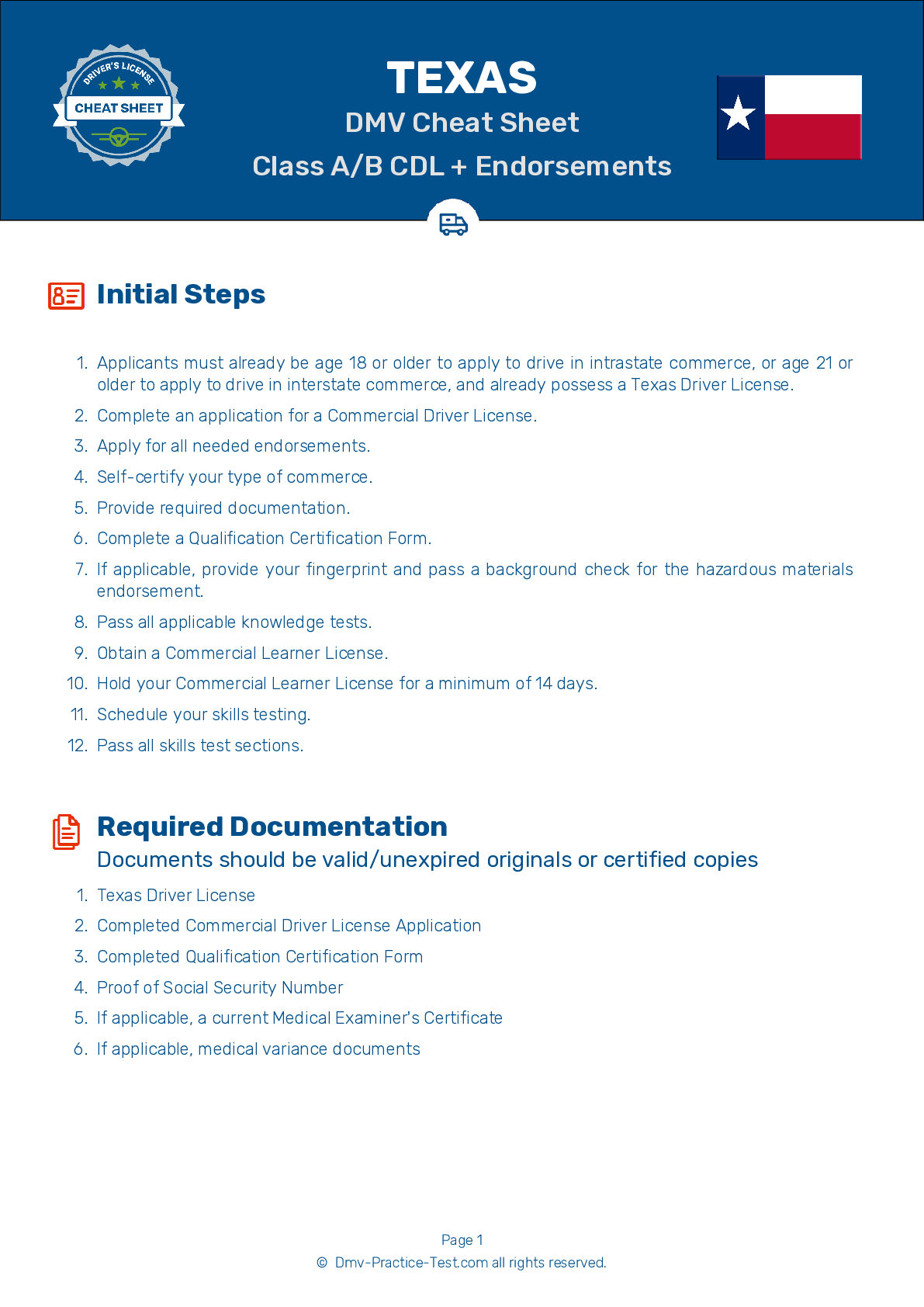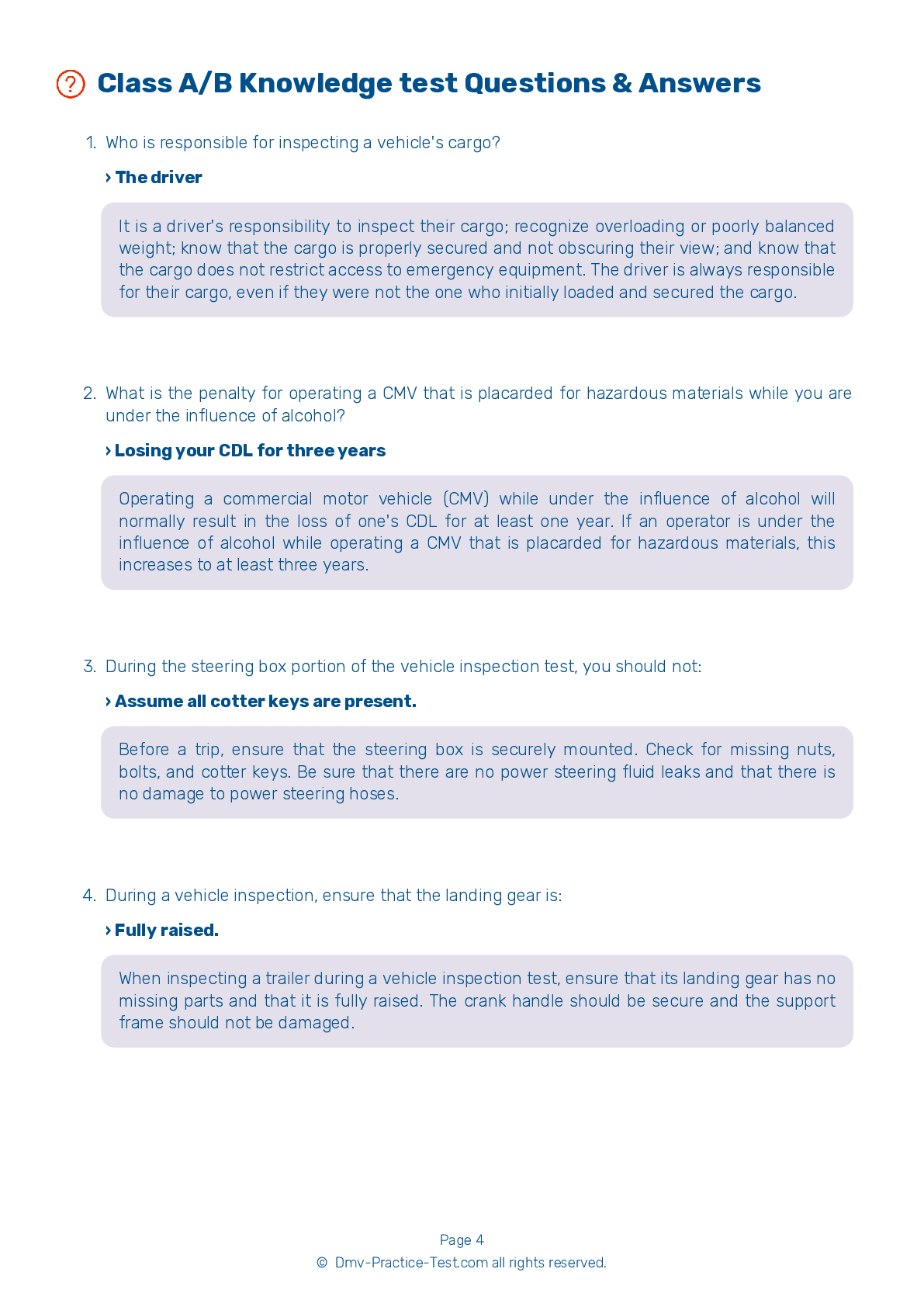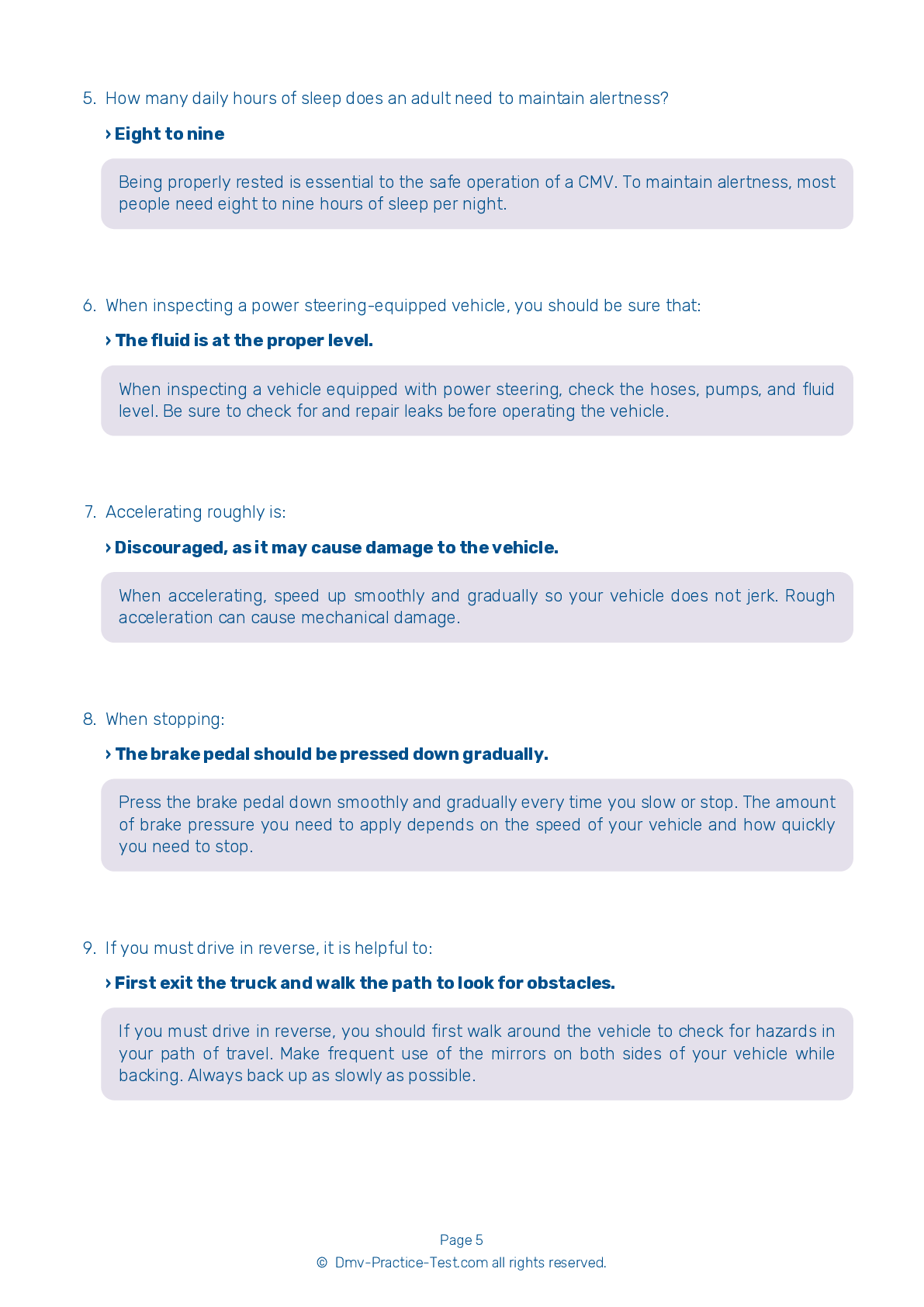Class A Driving Test | Texas 2025 #2 Page 3 of 10
Train for FREE online with our Texas class A license test. The official exam test consists of several obligatory parts, with all of them checking your knowledge of different blocks of road rules. If you need to obtain a TX CDL class A permit in 2025, practice as much as possible. Free sample tests published on our website will help you check and improve your knowledge and boost your grades. Please bear in mind that CDL class A requirements may vary from state to state.
15 . What color are ABS malfunction lamps?
Vehicles with Anti-Lock Braking Systems (ABS) have yellow malfunction lamps.
16 . What is a wig wag?
A wig wag is a type of low air pressure warning device in an air brake system. It drops a mechanical arm into the driver's view when the air pressure in the tanks falls below 60 psi.
17 . If you need to travel down a hill, you should switch into a lower gear:
Always downshift before beginning to drive downhill. Forcing an automatic transmission into a lower gear at a high speed could damage the transmission and also lead to a loss of ability to engine brake. Drive at a speed that will allow you to control your vehicle without overusing your brakes. When determining a safe speed to drive, you should take into account the steepness of the grade, the length of the grade, the weight of your vehicle, road conditions, and weather conditions.
18 . The driver of a 40 foot vehicle traveling more slowly than 40 mph should be at least ____ behind the vehicle in front of them.
When traveling at speeds under 40 mph, you should allow a minimum of one second of following distance for every 10 feet of your vehicle's length. At faster speeds, add at least one additional second.
19 . When you need to stop in an emergency, you should:
If you need to make an emergency stop, you can use either the controlled braking method or the stab braking method. It's important to brake in a way that keeps your vehicle traveling in a straight line while still allowing you to turn, if necessary.
20 . Federal and state laws require:
Commercial drivers are required by federal and state laws to inspect their vehicles before every trip. Regular inspections can help drivers identify issues before they become dangerous and costly.
21 . Braking mechanisms are located ____ a brake drum.
Drum brakes are attached to the wheels and located on the axles of a vehicle. The braking mechanisms that cause the vehicle to stop can be found inside of a drum brake.
See the exact questions that will be on the 2025 Texas DMV exam.
99.2% of people who use the cheat sheet pass the FIRST TIME
Lillian MCcranie explains how our CDL study guide was helpful in passing the exam and recommends it to everyone.
Cameron tells us how he purchased the CDL exam, and found it to be a useful tool which helped him pass the exam and find a job.



